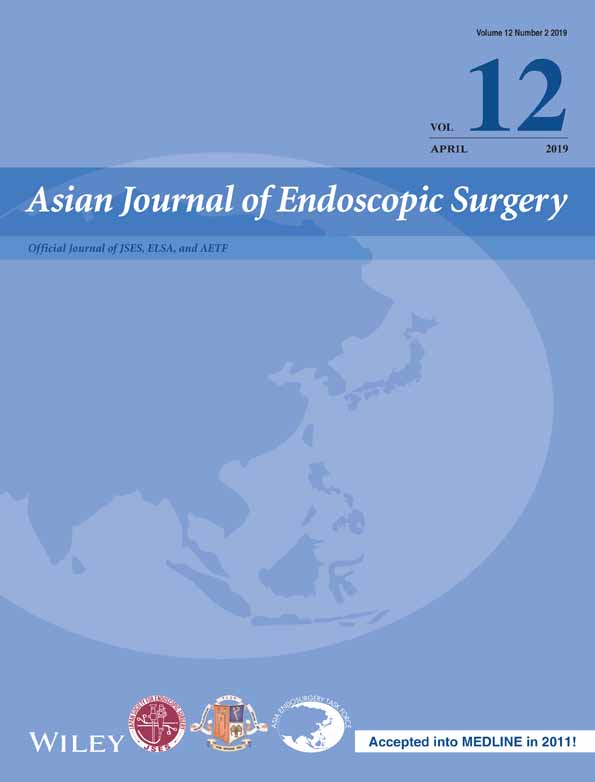Effective method of gallbladder retraction for single-incision laparoscopic cholecystectomy
Abstract
Introduction
Recently, single-incision laparoscopic cholecystectomy has been accepted as an alternative to conventional laparoscopic cholecystectomy. The aim of this study was to retrospectively evaluate the safety and feasibility of unique gallbladder retraction methods using an ENDOLOOP® (Ethicon, Tokyo, Japan) and Lapaherclosure™ (Hakko Medical, Tokyo, Japan).
Materials and Surgical Technique
From May 2013 to April 2015, 77 patients underwent single-incision laparoscopic cholecystectomy with this retraction technique. During the same period, conventional laparoscopic cholecystectomy was performed in 85 patients; these patients were the control group. The patients' data, including the operative time, total blood loss, conversion rate to laparotomy, and perioperative complications, were compared. Alexis® Wound Retractor XS (Applied Medical, Tokyo, Japan) was inserted through a 25–30-mm vertical transumbilical incision to prevent bile contamination. Next, a SILS Port (Covidien, Tokyo, Japan) was inserted. A flexible 5-mm laparoscope was inserted through the port with a grasper (SILS Clinch, Covidien) and a normal 5-mm scalpel. The fundus of the gallbladder was tied by the ENDOLOOP. The Lapaherclosure was then directly inserted through a right lower intercostal space to capture and pull the Lapaherclosure out. After the cystic artery and duct were cut, the resected gallbladder was directly extracted from the umbilical incision.
Discussion
Several methods and devices have been developed to perform single-incision laparoscopic cholecystectomy, including the suturing method, the Mini Loop Retractor II (Covidien), and the EndoGrab (Virtual Ports, Caesarea, Israel). However, considering medical costs and safety, our retraction method seems to be feasible and comparable to existing methods.




